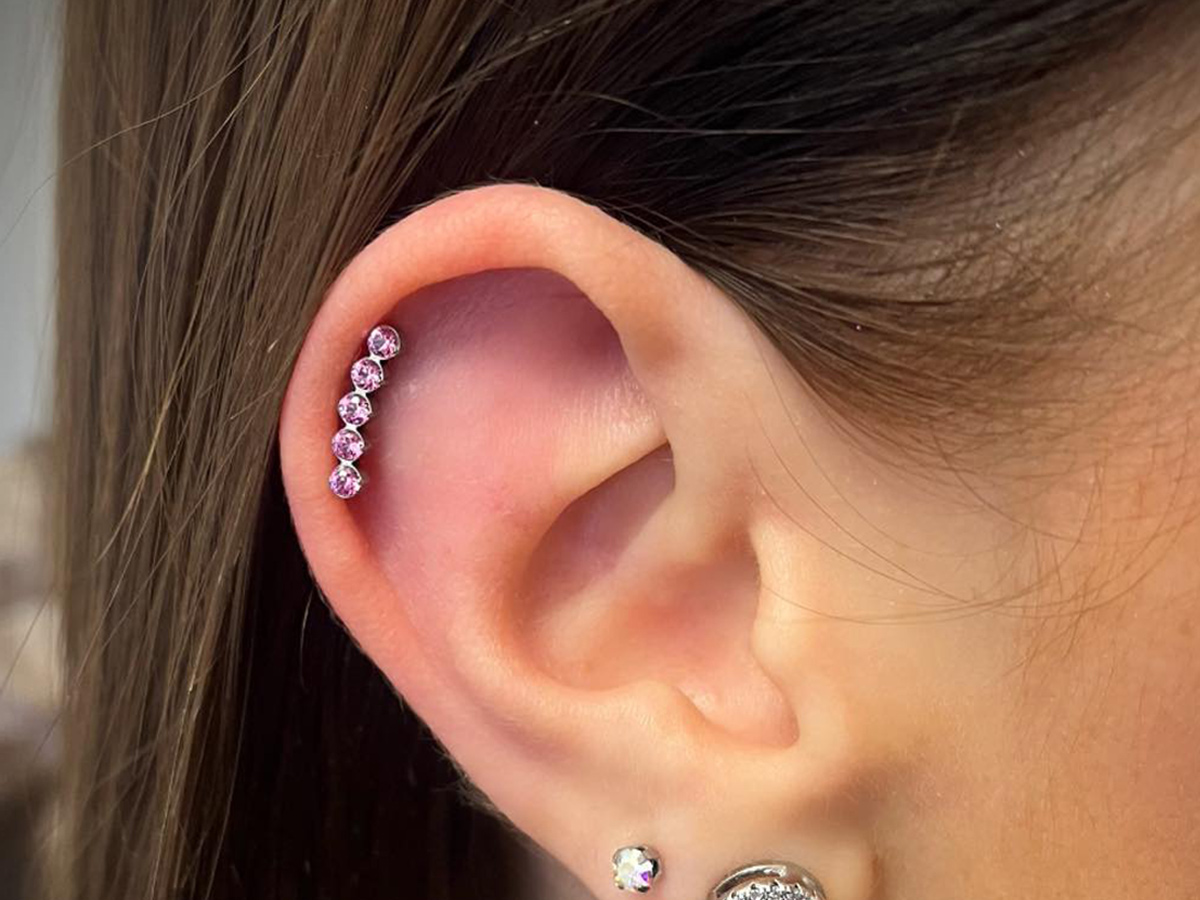Ear piercings offer a wide array of options, each with its own unique appeal and maintenance requirements. Among the popular choices is the helix piercing, also known as a cartilage piercing, situated on the upper part of the ear. This piercing offers versatility and can be adorned with various jewelry styles to suit individual preferences.
Helix piercings are favored for their adaptability, allowing for a range of earring and design choices. Positioned along the outer edge of the ear, they offer flexibility in placement, enabling individuals to select a location that complements their anatomy.
To delve deeper into this widely embraced piercing, we sought insights from expert piercers and dermatologists, who provide comprehensive information ranging from the pain and healing process associated with helix piercings to the types of jewelry utilized. Before scheduling your next piercing appointment, read on to gain a better understanding.
What Is a Helix Piercing?
A helix piercing, also referred to as a cartilage piercing, finds its placement on the outer cartilage of the ear. It encompasses various variations, such as the forward helix, double helix, triple helix, and anti-helix (or snug) piercings, each distinguished by its location on the ear.
Types of Helix Piercings:

Single Helix
A single helix piercing is a classic option placed on the outer cartilage of the ear, offering versatility in jewelry selection and styling.

Double Helix Piercing
For a visually striking look, consider a double helix piercing, featuring two piercings stacked vertically on the outer edge of the earlobe. Common styling includes pairing two small diamond studs for a minimalist approach.

Triple Helix Piercing
Elevate your ear styling with a triple helix piercing, consisting of a group of piercings lining the outside of the ear following its natural curve. This arrangement creates an elegant shape and can be adorned with small studs for a refined jewelry style.

Forward Helix Piercing
The forward helix piercing is positioned across from a regular helix piercing, sitting in the inner cartilage of the ear. Often styled with a small hoop or stud, it offers a stunning addition to your ear jewelry collection.
Cost of a Helix Piercing
The cost of a helix piercing typically ranges from $30 to $75. However, this price can vary significantly depending on factors such as the location of the piercing studio, the expertise of the piercer, and the choice of jewelry. It’s important to prioritize the skill of the piercer over the cost when making your selection.
How Painful Is a Helix Piercing? On the pain scale, a helix piercing is generally rated around a 5 out of 10, although individual experiences may vary.
What Jewelry Can You Wear in a Helix Piercing? Helix piercings offer versatility in the choice of jewelry. They are ideal for wearing clicker hoop earrings or labret studs. Initially, you may be pierced with a stud featuring a longer post length or a clicker hoop with a larger inner diameter to accommodate swelling. Once the swelling subsides, you can transition to smaller jewelry.
Aftercare for a Helix Piercing
To promote proper healing of your helix piercing, it’s essential to follow these aftercare tips:
- Clean your new piercing twice daily using a sterile saline solution, such as Neilmed piercing mist. Ensure to dry the area thoroughly afterward to prevent moisture buildup, which can harbor bacteria. Using a hairdryer on the cool setting can aid in drying.
- Be cautious when removing clothing and styling your hair to avoid snagging the jewelry.
- Sleep on the opposite side of your piercing or use a donut-shaped travel pillow to minimize pressure.
- Refrain from swimming in lakes, pools, or hot tubs for 2-3 weeks while the piercing is healing.
- Schedule a routine check-up consultation with your piercer around 6 weeks after the piercing. They will assess whether you need to downsize the post of your stud to aid in the healing process once the initial swelling has reduced.
- Allow the piercing to heal naturally by minimizing interference and avoiding unnecessary touching.
How Long Does a Helix Piercing Take to Heal?
Healing time for a helix piercing can range from 6 to 12 months, although individual healing rates may vary.
How to Change Out a Helix Piercing
Before changing your helix piercing jewelry, ensure that it’s fully healed. It’s advisable to seek assistance from your piercer for the first change to minimize the risk of complications. Your piercer can provide guidance on the process, helping you feel confident in managing it yourself. When ready to change the jewelry, remove the backing from a stud or gently separate a flexible metal ring to slide it out. Insert the new jewelry using the same method. If you encounter difficulties, consult your piercing professional for assistance, especially within the first few months to prevent the piercing from closing up.



